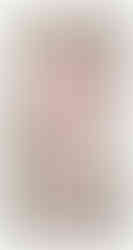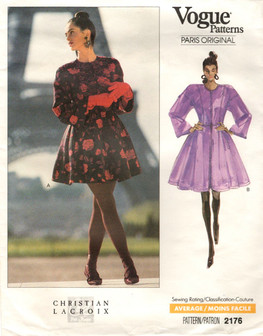Wild and Shiny 1980s
- Katerina
- 5 апр. 2021 г.
- 4 мин. чтения
Обновлено: 18 июл. 2021 г.
On this day a year ago I posted the first post on the blog's website! It was not a real post, but more testing of the website: rough sketches and a couple of photos. Today you can already read 16 posts in English.
Today is not only the blog's birthday but also mine, so I am publishing a post about the fashion of the decade in which I was born.

Fashion in the eighties was not very elegant: loose fit, bright colours and their combinations, bold styles. All this was complemented by a voluminous hairstyle fixed with hair spray, defiant makeup with multi-coloured eye shadows, unnatural shades lipstick, massive plastic jewelry, and huge glasses.
In the West, the eighties were a time of economic prosperity, the development of technology, the consumption of goods that demonstrated status. Women, along with men, sought to build successful careers and needed clothing that made their figure masculine. Oversized dresses were worn in the shape of an inverted triangle, with an emphasis on the shoulders, which was achieved with shoulder pads. They also wore jackets, bat-sleeved blouses, high-waisted trousers, wide belts. The image was complemented by pumps.
Business outfits in Working Girl (1988):
The image of a businesswoman in the West was cultivated by Margaret Thatcher, the first woman Prime Minister of Great Britain, and in the USSR, Raisa Gorbacheva, the first lady of the USSR.
Another 1980s fashion trend is glitter and glamour. Bright and shiny fabrics, expressive silhouettes, accentuated by big shoulders. Impressive, but at the same time very beautiful clothes were abundantly decorated with sequins, rhinestones, beads, appliqués, and even feathers.
Simultaneously imperiousness and glamour were demonstrated by the character Joan Collins in the TV series Dynasty (1981-1989).
Inspired by the costumes of Joan Collins in Dynasty, Lucy Liu`s image in Why Women Kill (2019) was created.
No less glamorous Goldie Hawn in Overboard (1987)…
…and Meryl Streep in She-Devil (1989).
The launch of the MTV music channel in 1981 combined music and fashion. Music and subcultures style trends elements penetrated youth fashion: from punk rock leather jackets with rivets and rough boots, jewelry with chains and mohawks, to mini dresses with sequins in the disco style.
The 1980s pop queen Madonna inspired girls to wear wild hairstyles with bows, leather biker jackets and poof skirts. Her aggressive and outspoken style was complemented by corsets designed by enfant terrible Jean Paul-Gaultier.

In the USSR, fashion for girls was dictated by Mirage and Kombinaciya music bands: mini-skirts, fishnet and coloured tights, denim clothes.
Especially there was fashionable to wear denim with a tie-dye effect. In the USSR, it was difficult to get them, so many people created this effect at home.
I was lucky, I had a ready-made tie-dye dress:

Also, Soviet women copied the style of Alla Pugacheva, Sofia Rotaru, Laima Vaikule, and other pop singers.
It was difficult to buy fashionable clothes in the USSR. Many of them sewed on patterns from the magazines Krestyanka and Rabotnitsa. In March 1987, the USSR began to publish a magazine created for German housewives, Burda Moden.

It was also possible to buy expensive ready-made Western clothes from the fartsovshchiks, people who sold them illegally.
There was also a romantic style in the 1980s. Diana, Princess of Wales, was the style icon of it. Diana wore blouses and dresses with flounces, collars, and bows. Her wedding dress with a full skirt and sleeves, which was created by David and Elizabeth Emanuel, was copied by millions of girls.
Jane Fonda made the whole world do aerobics, and multi-coloured leggings, legwarmers, and forehead bands came into fashion. Fitness became a popular hobby, a healthy lifestyle was cultivated, and a beautiful body became a symbol of high social status. Tracksuits, sneakers and other sportswear began to be worn not only in the gyms but also in the streets.
Kirstie Alley in Look Who's Talking (1989):

The perfect body had to be demonstrated, so bandage dresses inspired by the mummification in Ancient Egypt, which were created by the Tunisian-born designer Azzedine Alaia, became at the peak of popularity. In his dresses, women looked both strong and sophisticated.
Also in Paris worked Christian Lacroix, whose style was called "neo-baroque". He boldly combined different textures and colours. Christian Lacroix's blouse was on the model that was on the first cover of American Vogue headed by Anna Wintour, 1988.
Karl Lagerfeld was hired to rebuild the Chanel fashion house. He combined the classic elements of the brand with modern playful trends.
Thierry Mugler created aggressive and domineering female images.
Yves Saint Laurent continued to create. There were pantsuits, intricate dresses, the rebirth of the tuxedo, art inspiration.
In 1983, Yves Saint Laurent presented one of the most beautiful dresses in his career. The dress called Paris consists of a pink off-the-shoulder top with a giant bow at the back and a black velvet skirt with a high slit. For years this model has been interpreted by the fashion house. About the most iconic pink dresses in fashion history you can read in this post.

In 1988, Saint Laurent created a series of beaded jackets, each was put up for sale for $ 85,000. Inspiration for embroidery was "Sunflowers" and "Irises" by Van Gogh - at that time the two most expensive paintings in the world.
In London, Vivienne Westwood remained at the forefront of fashion designers, creating alternative fashion in the punk and avant-garde style.
I like her Mini Crini collection (Spring / Summer 1985), inspired by the Victorian era, with a slim waist in corsets and puffy short skirts. Westwood showed a fashion that was the opposite of 1980s trends.

In the 1980s, leading positions in world fashion were taken by Japanese clothing designers: Issei Miyake, Yohji Yamamoto, Rei Kawakubo, Kenzo Takada, and others. The unusual form of clothes models was at the intersection of fashion and art.
In 1982, the modern art industry magazine Artforum put on the cover a photograph of a model wearing Issey Miyake's jacket and skirt from the Body Works collection. The magazine equated the dress created by the fashion designer with an art object.
Also in the 1980s, there was a peak in popularity with Italian designers Giorgio Armani, Franco Moschino and Gianni Versace. Versace attracted the most famous models for its advertising campaigns and fashion shows and contributed to the birth of the supermodel phenomenon, which was at the turn of the 1980s and 1990s.



















































































































































Comentarios